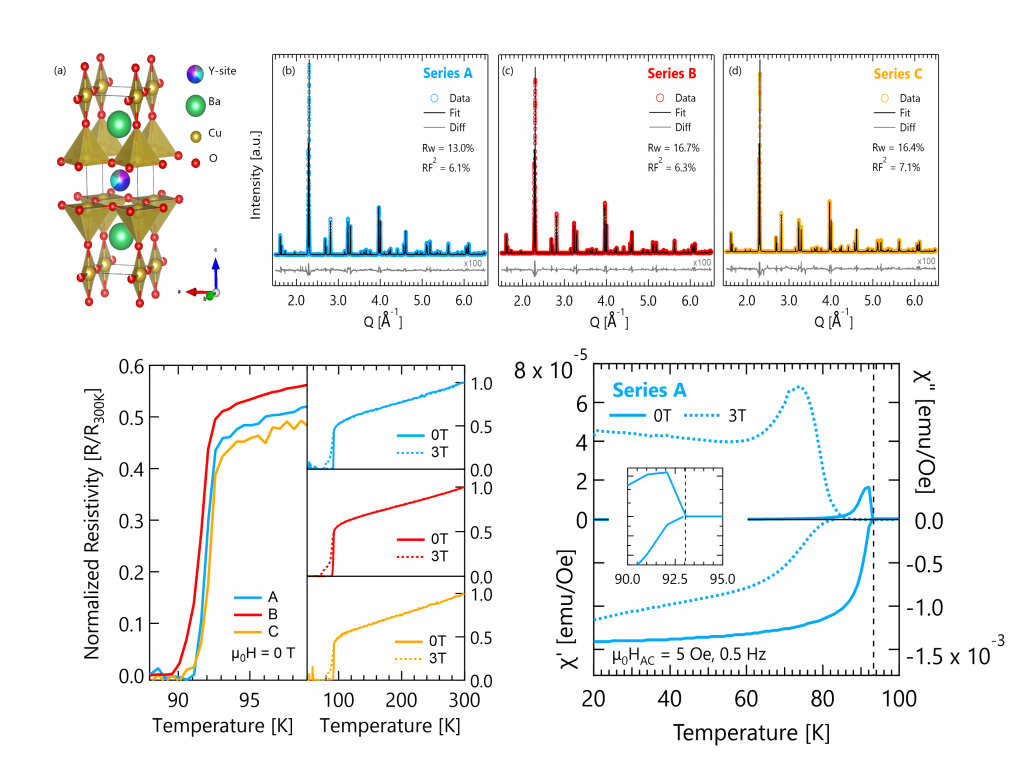Examining the interplay of order and disorder
Background
Long-range ordering of dipoles underlies the properties and performance of magnetic and ferroelectric materials. Understanding the stability of such long-range ordered phases in the presence of external stimuli and/or intentional disorder is critical to engineering magnets, superconductors, and ferroelectrics for optimal performance in a variety of applications.
Our group is studying the effects on long-range spin structures caused by adding large degrees of point-defect disorder to transition metal oxide compounds.
Project Descriptions
In one set of studies, we have focused on the perovskite crystal structure with the generic chemical formula, ABO3. We see pronounced differences in the long-range magnetic structure and properties when defects are added to the A-site versus when they are added to the B-site. These observations are in line with predictions based upon considering the dominant type of magnetic interaction on each site, namely dipole coupling and magnetic exchange on the A-site and B-site, respectively. Our ongoing work in this area seeks to understand the generality of our initial results and establish family-wide structure-property trends that will provide a rules for tailoring magnetic structures in highly-disordered perovskites.

In a second set of studies, we focused on the high-temperature superconductor structure found in the parent compound YBa2Cu3O7-x (YBCO). We extended the “entropy-enhanced” alloying approach used to generate high-entropy oxides to create a series of compounds with five elements alloyed onto the Y-site of YBCO. Remarkably, despite adding significant spin disorder to this system through the alloying process, the superconducting phase remains highly stable, showing only a ~1% decrease in the transition temperature, which is a measure of the strength of the electron-electron pairing in superconductors. These initial results are exciting, and the chemical flexibility possible in this family of materials allows future studies in which the spin and lattice disorder are decoupled and tuned independently, a feat not possible in simpler alloying schemes. Therefore, moving forward, we hope these highly-disordered YBCO variants will provide a novel pathway for isolating the different proposed mechanisms for electron pairing in high-TC cuprate superconductors and help identify the dominant pairing interaction(s).